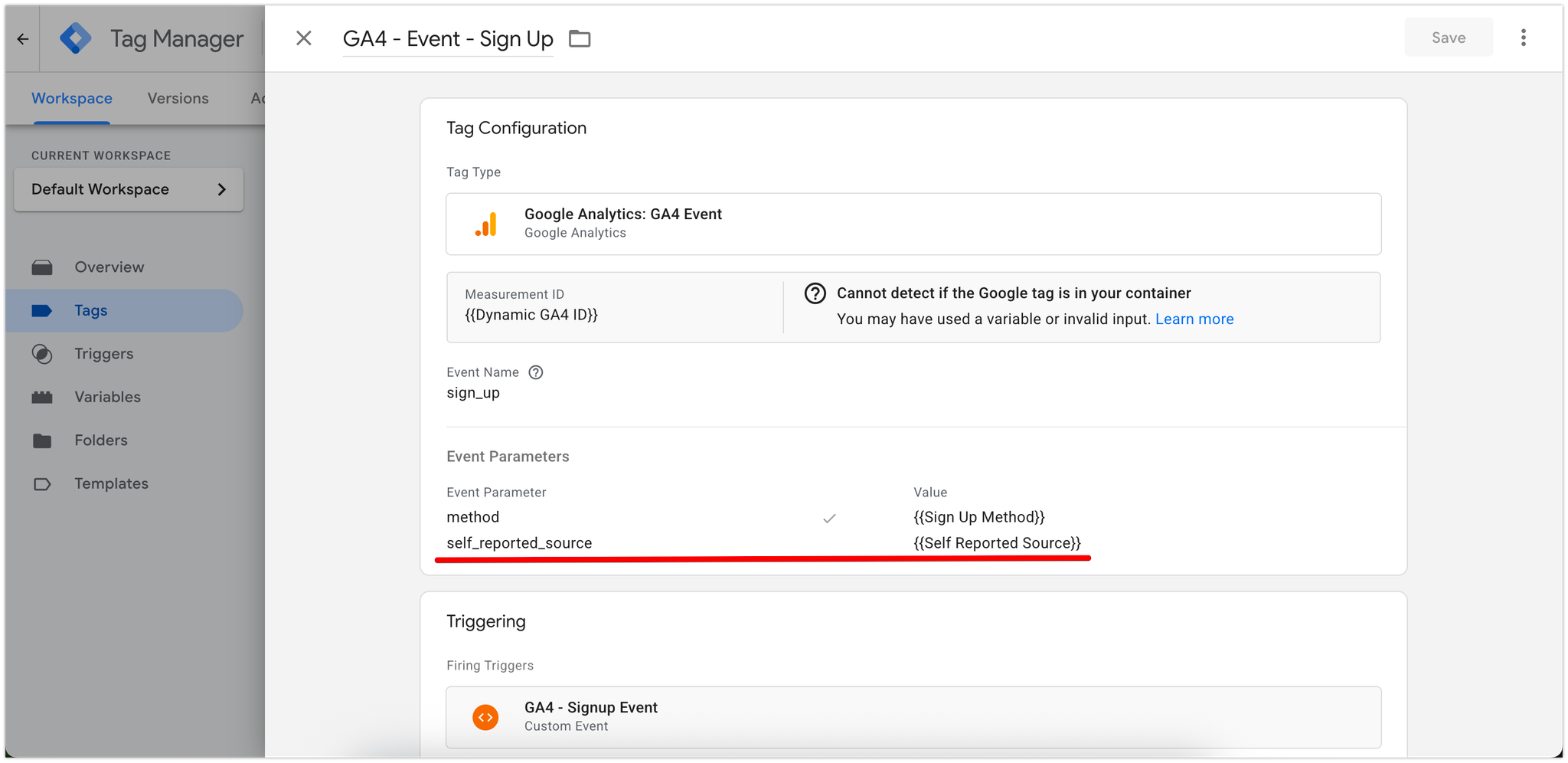Overview
Self-reported attribution helps recover lost conversions from “Direct,” “Brand,” or “Organic” channels by asking users directly how they heard about your brand and then mapping these responses to the appropriate paid or owned channels.
Add the “How did you hear about us?” Field
Add an optional “How did you hear about us?” field to your registration, checkout, or lead form. Free-text is preferred, but you can also make a list of answers to select from.
Store Responses in GA4 or CRM
You can store the user’s answer as an event parameter in GA4 (for example,
self_reported_source) or in your CRM. It is important that both the Client ID and the response are available in the source where this data is stored.GA4 Setup
When the form is submitted, the user’s answer should be passed to a custom event parameter, e.g.
self_reported_source.In Google Tag Manager, you can configure this in your GA4 event tag by adding a new Event Parameter and setting its value to the variable that contains the user’s answer.

CRM Setup
For CRM systems, you can pass the same value into one of the lead parameters, also named, for example,
self_reported_source. It is important that the Client ID is stored in the CRM together with this value to allow correct attribution stitching.Testing the Implementation
- Open your website in a test environment and complete the form using different responses.
- In GA4 DebugView, confirm that the event is being sent correctly and that
self_reported_sourceappears as a parameter.
- If using a CRM, verify that the same field is populated correctly in the lead or transaction records.
- Ensure that the Client ID is recorded together with the self-reported value.
- Validate that the event fires once per submission and that the data appears within a few minutes in GA4 Realtime or CRM logs.
- After successful testing, move the setup to production
Define Business Logic
After collecting sufficient responses, define which responses and how you would like to map them to your business channels. For example:
- “Friend,” “Local,” or “Shop” → Referral
- “YouTube” → Influencer
- “Instagram” → Meta
- “Newsletter,” “Email from brand” → Email
Keep a lookup table for consistent classification and to handle new response types as they appear. Even before re-attribution, the responses themselves can provide valuable insights into how customers perceive and discover your brand, helping to identify which channels or touchpoints drive the strongest brand awareness and engagement.
Re-Attribute Conversions
SegmentStream automatically classifies free-text responses using AI based on the business logic you define. It then uses classified data to re-attribute conversions that were originally labeled as Direct, Brand, Organic, etc. to their true paid or owned sources. The corrected attribution is then reflected in reports, improving visibility into real channel effectiveness.
